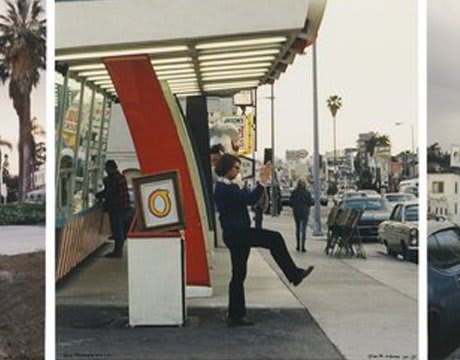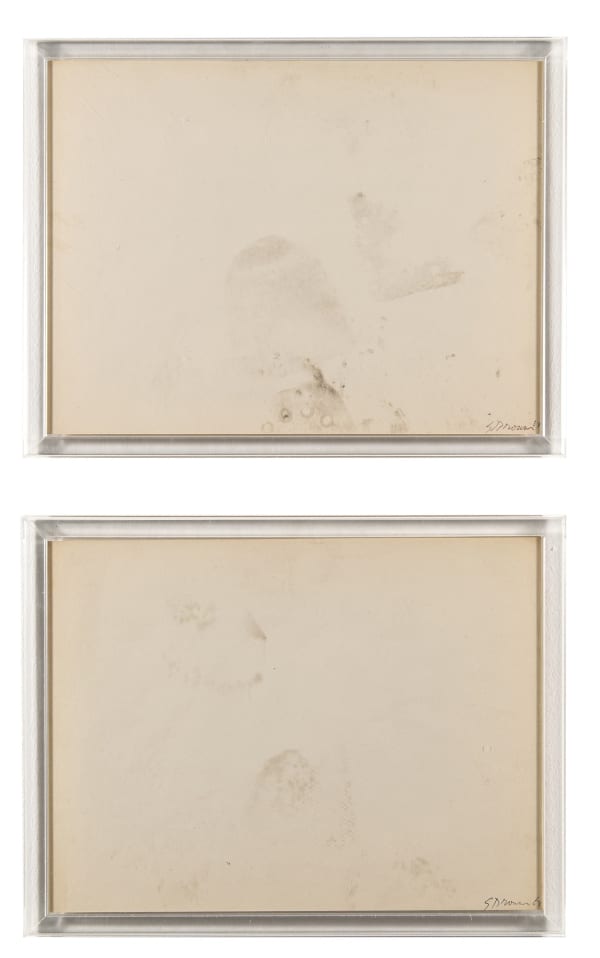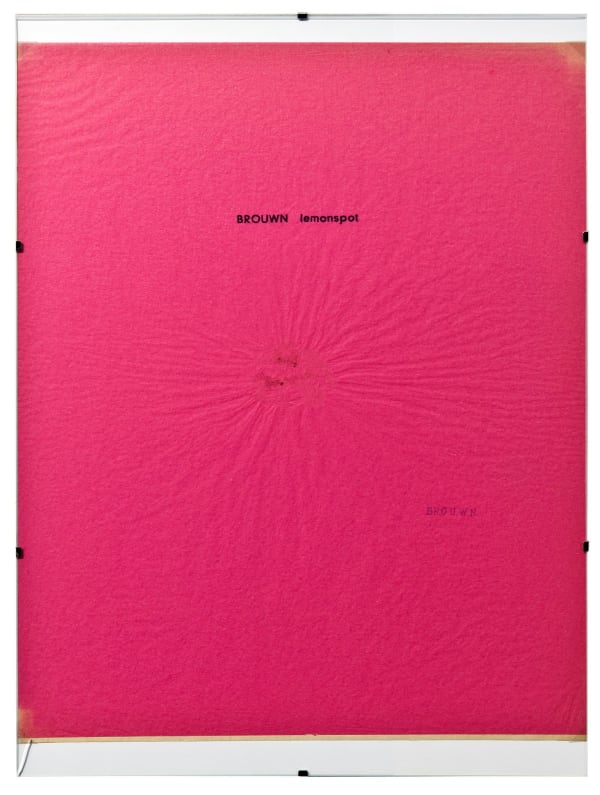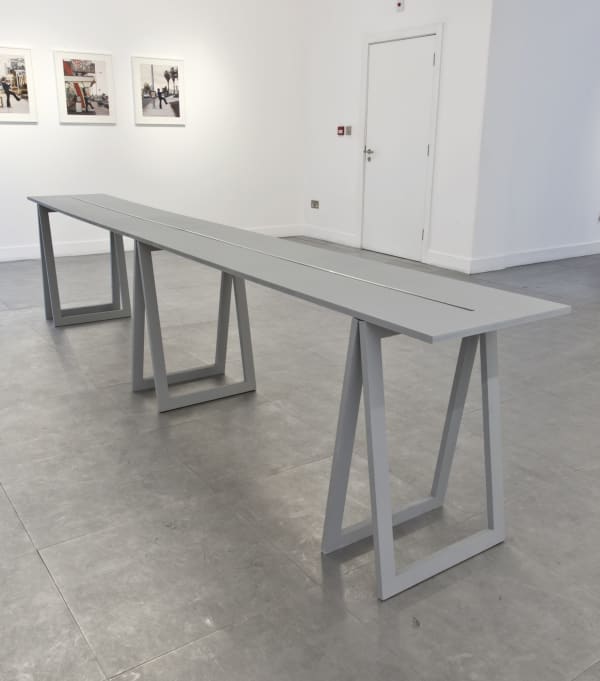DOUBLE DUTCH
'Double Dutch' brings together the work of Bas Jan ADER, Stanley BROUWN and Ger VAN ELK: three of the most important Dutch artists of the 1960s and 1970s. Exhibited together for the first time, each of these three artists have been significant contributions to the development of Conceptual art.
The Netherlands, in particular Amsterdam, was the centre for Conceptual art, with many artists tracing their inspiration and influences back to the city. A recent survey, featuring these three artists, was held a MOMA, New York in 2009, entitled In & Out of Amsterdam, Travels in Conceptual Art, 1960-1976.
-

Bas Jan ADER
Broken Fall (organic), 1974 -

Ger van ELK
Bana Brut, 1988 -

Bas Jan ADER
Artist's Book: Fall (22 filmstills from movies Fall I and Fall II), 1970 -

Stanley BROUWN
Steps of Pedestrians on Paper, 1963 -

Bas Jan ADER
In Search of the Miraculous, 1974 -

Ger Van ELK
Missing Person, 1976 -

Ger VAN ELK
The Co-Founder of the Word O.K. - Hollywood, 1971 -

Stanley BROUWN
BROUWN Lemonspot, 1963 -

Stanley BROUWN
Height of 1+m, 1994
'Double Dutch' brings together the work of Bas Jan ADER, Stanley BROUWN and Ger VAN ELK: three of the most important Dutch artists of the 1960s and 1970s. Exhibited together for the first time, each of these three artists have been significant contributions to the development of Conceptual art.
The Netherlands, in particular Amsterdam, was the centre for conceptual art with many artists tracing their inspiration and influences back to the city. A recent survey, featuring these three artists, was held a MOMA, New York in 2009, entitled In & Out of Amsterdam, Travels in Conceptual Art, 1960-1976.
Bas Jan Ader (b 1942 Winschoten, The Netherlands, d 1975) is famed for his mysterious disappearance at sea in 1975 which marked the end to a brief, but significant career. His death occurred while attempting to sail from the Cape Cod, United States to Falmouth, England as part of a trilogy entitled In Search of the Miraculous: the last publication of Ader's lifetime, an Art & Project Bulletin of the same title, will feature in the exhibition alongside photographs from Ader's Falls. This solo voyage, attempted by Ader in a boat just over 12ft in length, Ocean Wave, was the first time this feat had ever been attempted in a vessel of that size. After three weeks, radio contact with his boat was lost. Although it was spotted 60 miles out to sea and again near the Azores, he was never seen again.
Stanley Brouwn (b Paramaribo, Surinam) came to Amsterdam as a young adult in the mid-1950s where he developed work that plays with the idea of dimensions and distances and prefigures a number of conceptual-based art practices. The meandering walks and directional pursuits of Brouwn are for what he is most famed. Early drawings from the 1960s to be exhibited include; This Way Brouwn, a series in which he asked passers-by for directions and then had them draw the route; and Steps a series where Brouwn scattered blank sheets of paper on the pavement between certain points and collected them once they had been stepped on by passers by. Several late table sculptures will be exhibited. Brouwn maintains an aura of mystery: since 1972 the artist has requested that no biographical information should be given about him and that his work not be reproduced.
Ger van Elk, (b 1941 Amsterdam, The Netherlands) who like Bas Jan Ader trained in Los Angeles, was included in almost all key exhibitions of conceptual art, notably Arte Povera, Amalfi, 1968, Op losse schoeven, Amsterdam, 1969 and in the same year, Harald Szeemann's seminal exhibition When Attitudes Become Form, Bern and London. Works will include the triptych Co Founder of the Word OK - Hollywood. Made in LA, the photographs are set in three different locations on the Hollywood Boulevard, and feature van Elk standing next to a framed letter "O", his body awkwardly posed to create the letter "K". The work is based on a piece of etymological history: one source for the word OK comes from the nickname of US President Martin van Buren, known as Old Kinderhook. Van Buren, like Van Elk, a Dutchman living in the USA, adopted the political slogan Vote for O.K. for the 1840 presidential election. He lost the election.











